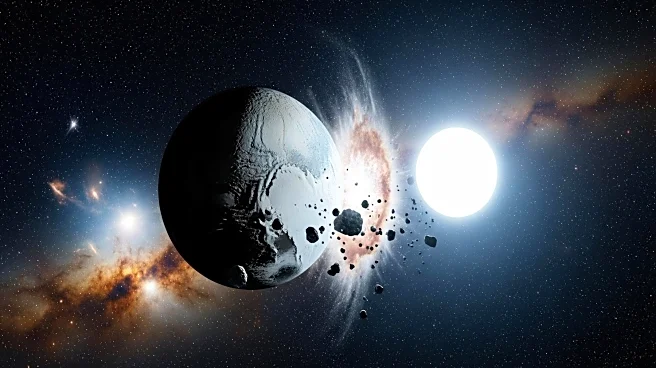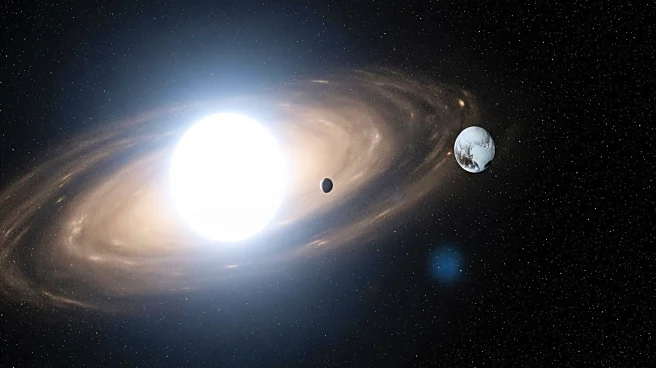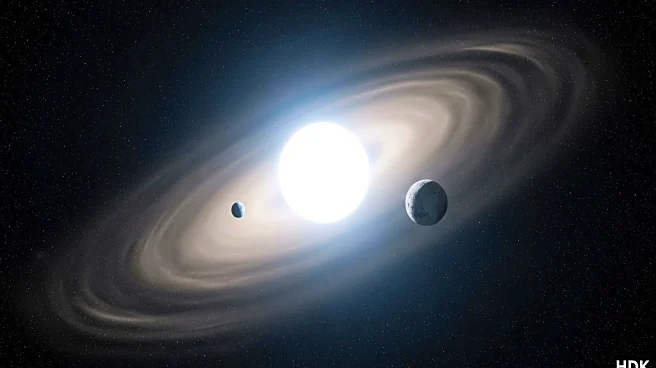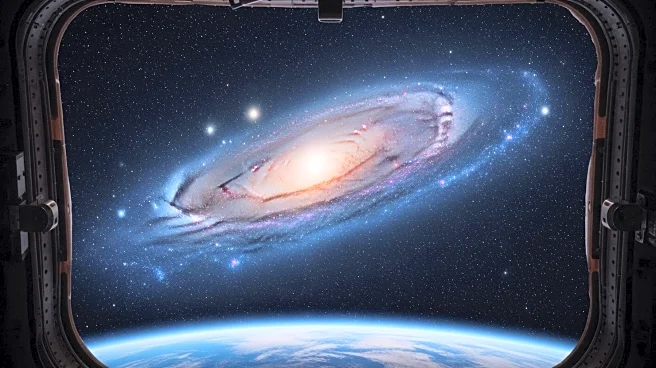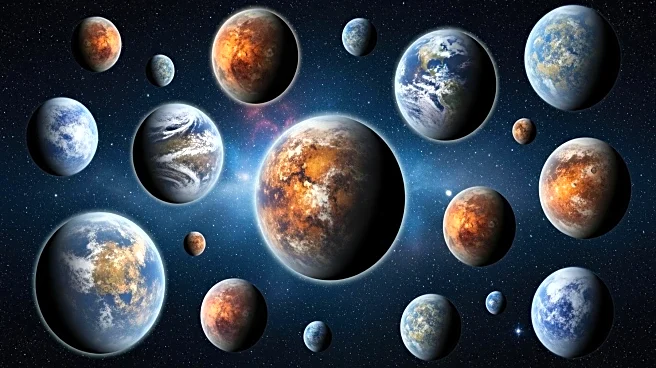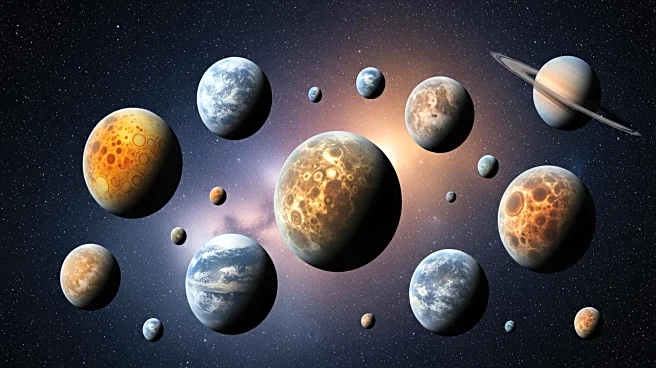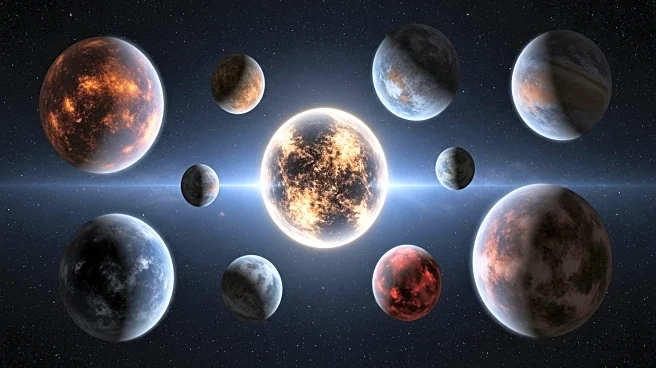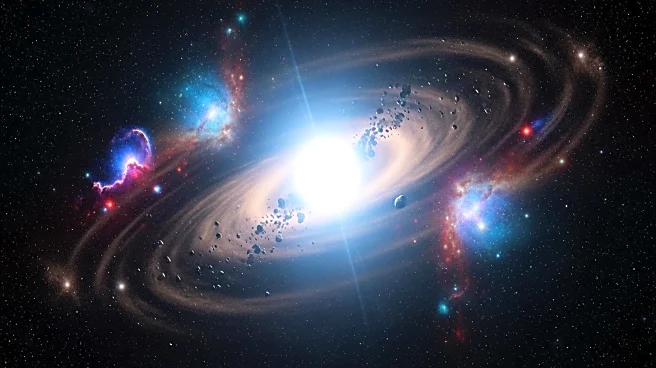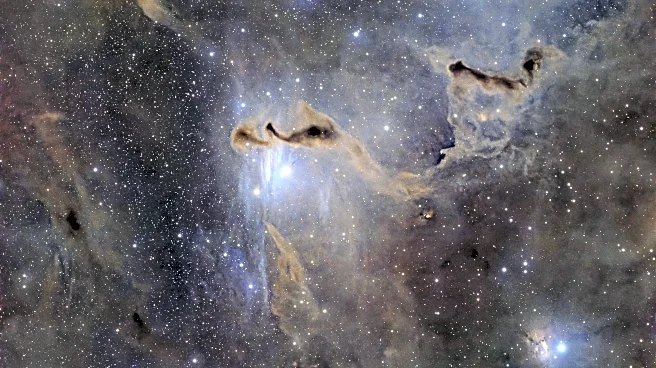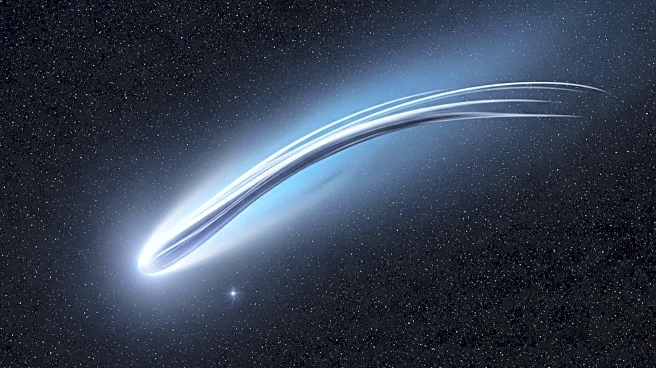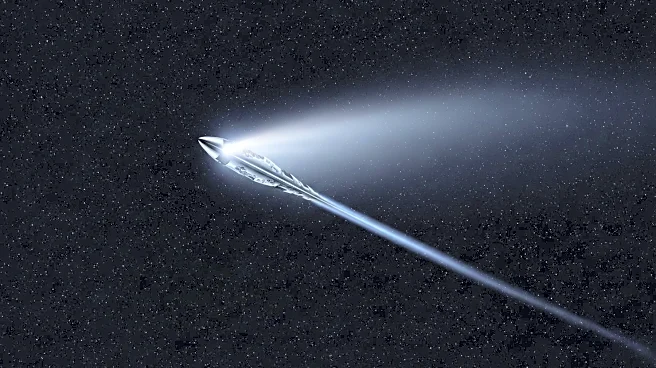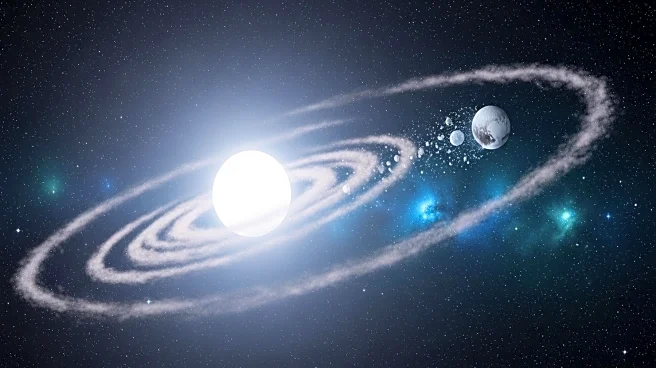What is the story about?
What's Happening?
NASA's Hubble Space Telescope has observed a Pluto-like world colliding with a white dwarf star, providing new insights into the fate of planetary systems. The white dwarf, named WD 1647+375, is located about 260 light-years from Earth. The discovery was made by analyzing the debris around the white dwarf, which revealed chemical fingerprints similar to those found on Pluto, including carbon, nitrogen, sulfur, and water ice. This suggests that icy bodies in the outer regions of a planetary system can survive long after their star has died. The findings, published in the Monthly Notices of the Royal Astronomical Society, offer a glimpse into the potential future of our solar system as the sun evolves into a white dwarf.
Why It's Important?
This discovery is significant as it enhances our understanding of planetary system evolution and the survival of icy bodies in space. It provides clues about how water and other essential elements are distributed across the universe, which is crucial for understanding the origins of life. The research also sheds light on the processes that occur when a star dies, offering a preview of what might happen to our solar system. These insights could inform future studies on exoplanets and the potential for life beyond Earth, impacting fields such as astrobiology and planetary science.
What's Next?
Further research will focus on analyzing the chemical composition of the debris to determine whether the Pluto-like object was native to the star's system or an interstellar visitor. Scientists will also explore the implications of these findings for the distribution of water and other life-supporting elements in the universe. This could lead to new theories about the formation and evolution of planetary systems, as well as the potential for habitable environments beyond our solar system.
AI Generated Content
Do you find this article useful?
